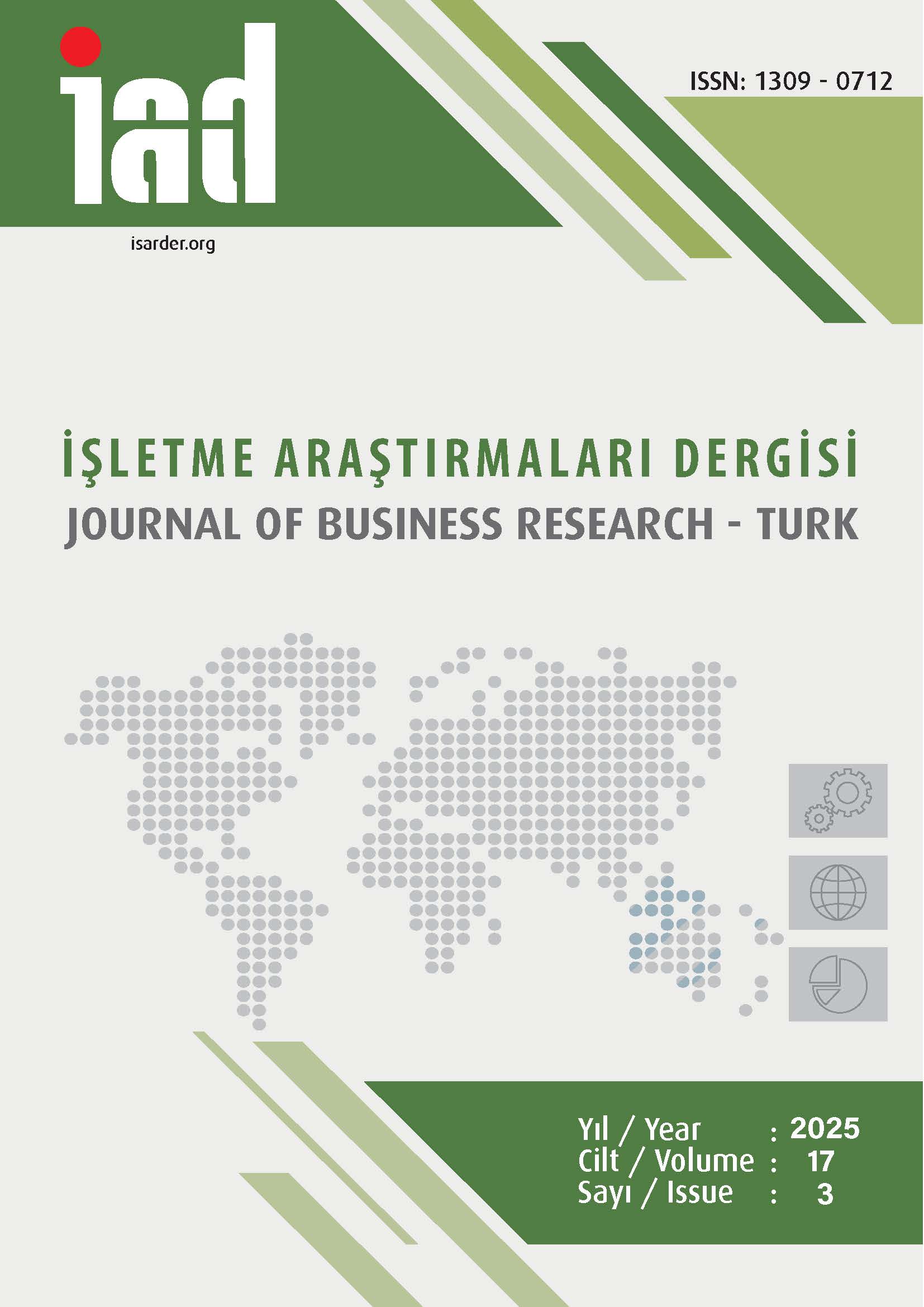Sorunlu Krediler ve Banka Etkinliği Arasındaki İlişki: OECD Ülkeleri Üzerine Ampirik Bir Analiz
DOI:
https://doi.org/10.20491/isarder.2025.2094Anahtar Kelimeler:
Sorunlu Krediler- Banka Etkinliği- Dirençli En Küçük Kareler- OECD Ülkeleri- Panel Veri AnaliziÖzet
Amaç – Bu çalışmanın amacı, 2013–2022 döneminde 38 OECD ülkesindeki 833 bankaya ait panel veriler aracılığıyla, sorunlu kredilerin banka etkinliği üzerindeki etkisini analiz etmek ve politika önerilerinde bulunmaktır.
Yöntem – Çalışmada yıllık panel veri seti kullanılarak banka düzeyinde etkinlik analizleri gerçekleştirilmiştir. Bağımlı değişken olarak banka etkinliği, bağımsız değişken olarak ise sorunlu kredi oranı ele alınmış; banka büyüklüğü, özkaynak oranı, ekonomik büyüme ve net faiz geliri gibi çeşitli kontrol değişkenleri modele dahil edilmiştir.
Bulgular – Analiz sonuçları, sorunlu kredi oranındaki artışın banka etkinliğini negatif ve istatistiksel olarak anlamlı düzeyde etkilediğini göstermiştir. Bu bulgular, “kötü şans hipotezi”ni desteklemektedir. Ayrıca kontrol değişkenleri arasında yer alan banka büyüklüğü, özkaynak oranı, ekonomik büyüme ve net faiz geliri gibi faktörlerin de banka etkinliği üzerinde belirleyici etkileri olduğu tespit edilmiştir.
Tartışma- Elde edilen bulgular, bankaların kredi kalitesini artırmaya ve maliyetlerini düşürmeye yönelik stratejiler geliştirmesi gerektiğini ortaya koymaktadır. Ayrıca politika yapıcılar için erken uyarı sistemlerinin kurulması, sermaye yapısının güçlendirilmesi ve faiz dışı gelirlerin artırılmasına yönelik politika önerileri sunulmaktadır.
İndir
Yayınlanmış
Nasıl Atıf Yapılır
Sayı
Bölüm
Lisans

Bu çalışma Creative Commons Attribution-NoDerivatives 4.0 International License ile lisanslanmıştır.





